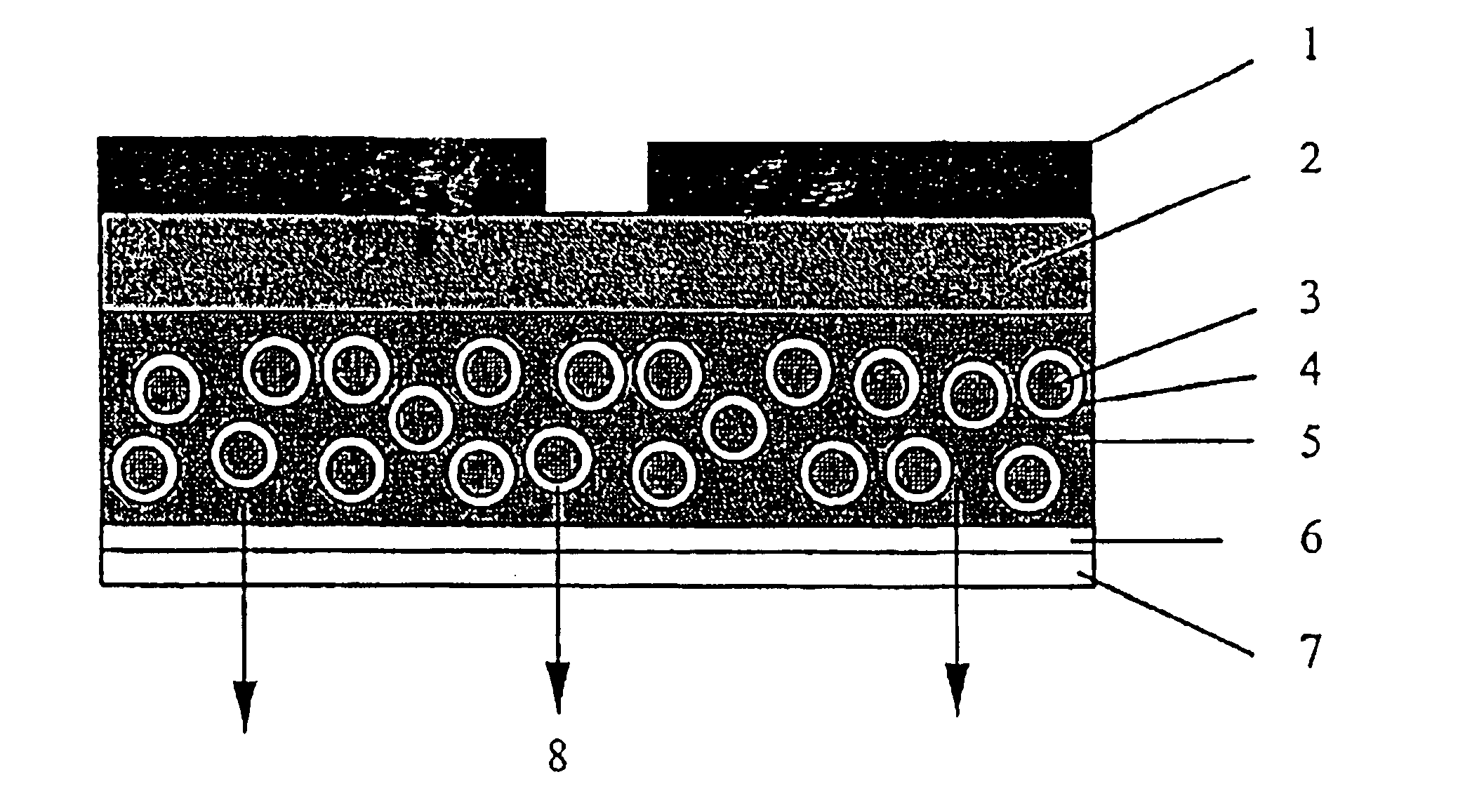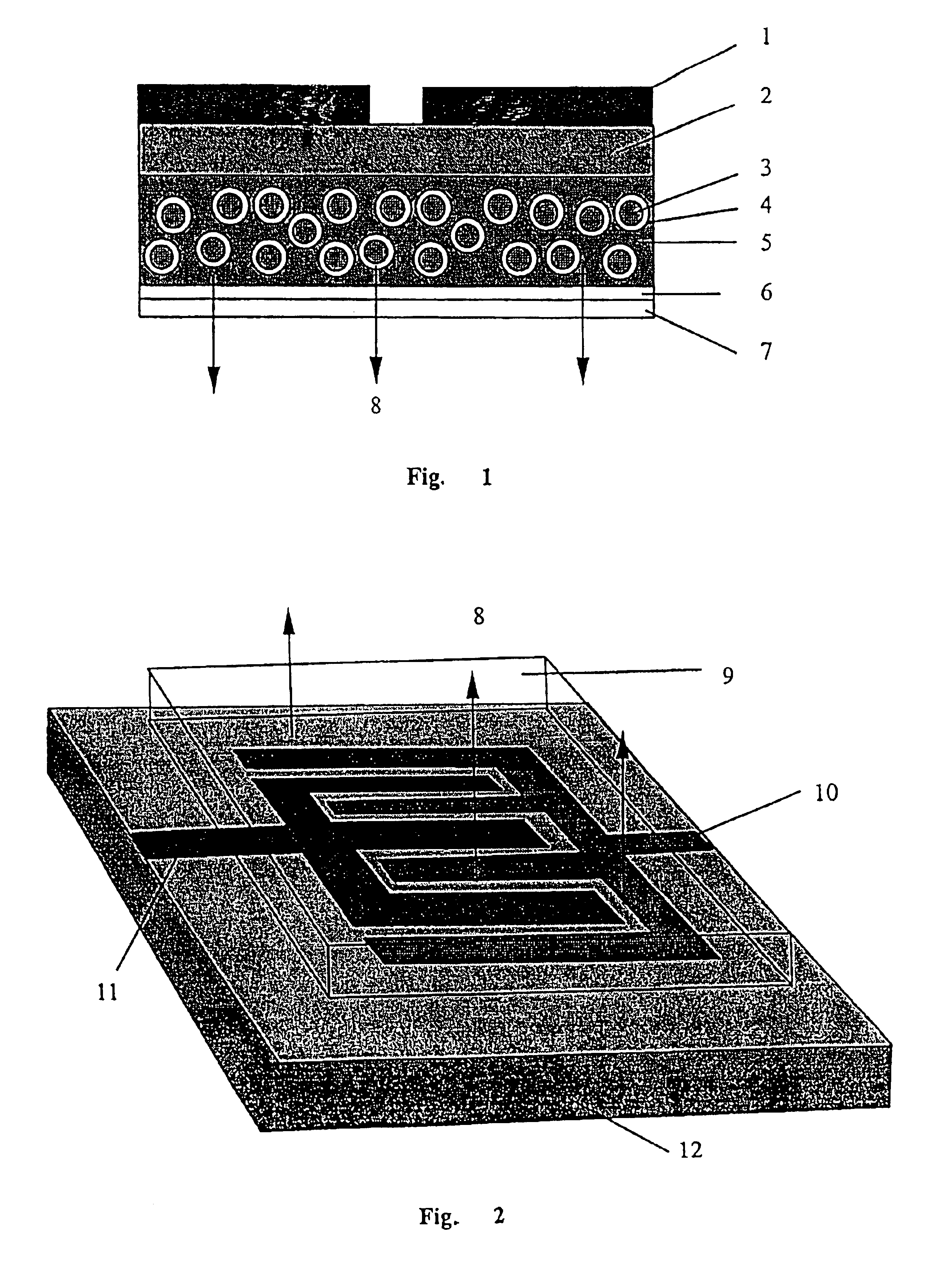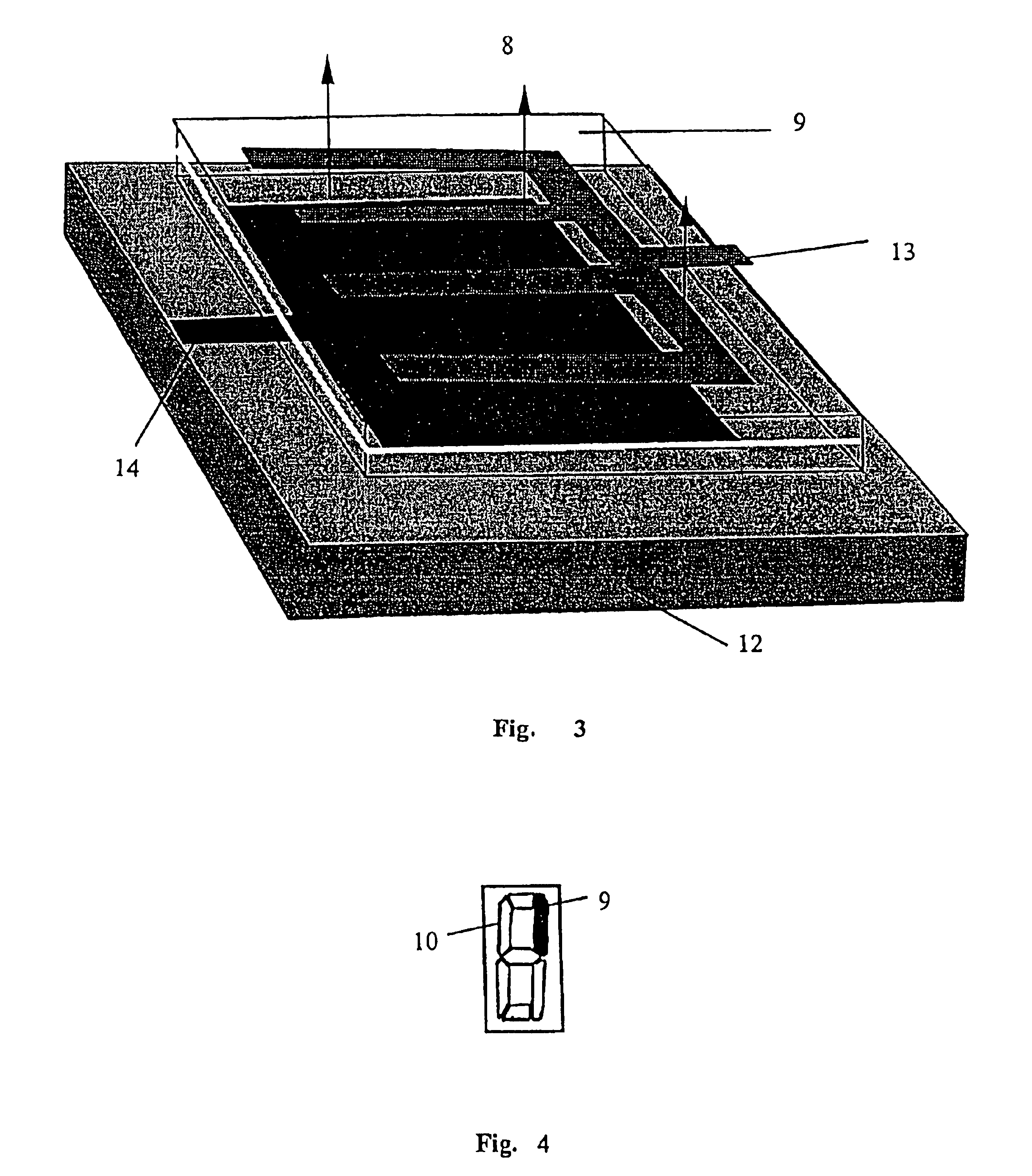Electroluminescent devices
a technology of electroluminescent devices and electrodes, applied in the direction of basic electric elements, electrical appliances, instruments, etc., can solve the problems of reducing the service life of the device, limiting the use of the device, and unable to substitute for the ito coated substra
- Summary
- Abstract
- Description
- Claims
- Application Information
AI Technical Summary
Benefits of technology
Problems solved by technology
Method used
Image
Examples
first embodiment
In the invention, instead of creating the electric field between two planar electrodes as in the prior art (see FIG. 1), the electric field is generated laterally across a single plane between adjacent electrodes applied to a base substrate (see FIG. 2). These adjacent electrodes may, for instance, be interdigitated as shown in FIG. 2 or they may be formed in another shape, as determined by the particular application.
FIG. 2 shows an electroluminescent illuminating means according to a first embodiment of the invention. An electroluminescent substance 9 such as a phosphor (powder film) layer or a phosphor (powder film) layer together with a dielectric sandwich layer lies above a pattern of two electrodes 10, 11 which are interdigitated and which, in turn, lie on a base substrate 12. When appropriate electric signals are applied to the two electrodes 10, 11, the electroluminescent substance emits light 8.
An electroluminescent illuminating means according to the first embodiment of the...
second embodiment
In the invention, instead of creating the electric field between two full area planar electrodes (see FIG. 1) and allowing the light to escape through the transparent top electrode 6 the field is generated between two planar electrodes which are formed so as to allow light to escape through gaps created in one (or both) of the electrodes (see FIG. 3).
FIG. 3 shows an electroluminescent illuminating means according to a second embodiment of the invention. An electroluminescent substance 9 such as a phosphor (powder film) layer or a phosphor (powder film) layer together with a dielectric sandwich layer lies above a first electrode 14 which lies on a base substrate 12. A second electrode 13 is formed on top of the electroluminescent substance. The second electrode 13 does not fully cover the electroluminescent substance 9 and when appropriate-electric signals are applied to the two electrodes, the electroluminescent substance 9 emits light 8 `around` the second electrode 13.
An electrolu...
PUM
 Login to View More
Login to View More Abstract
Description
Claims
Application Information
 Login to View More
Login to View More - R&D
- Intellectual Property
- Life Sciences
- Materials
- Tech Scout
- Unparalleled Data Quality
- Higher Quality Content
- 60% Fewer Hallucinations
Browse by: Latest US Patents, China's latest patents, Technical Efficacy Thesaurus, Application Domain, Technology Topic, Popular Technical Reports.
© 2025 PatSnap. All rights reserved.Legal|Privacy policy|Modern Slavery Act Transparency Statement|Sitemap|About US| Contact US: help@patsnap.com



